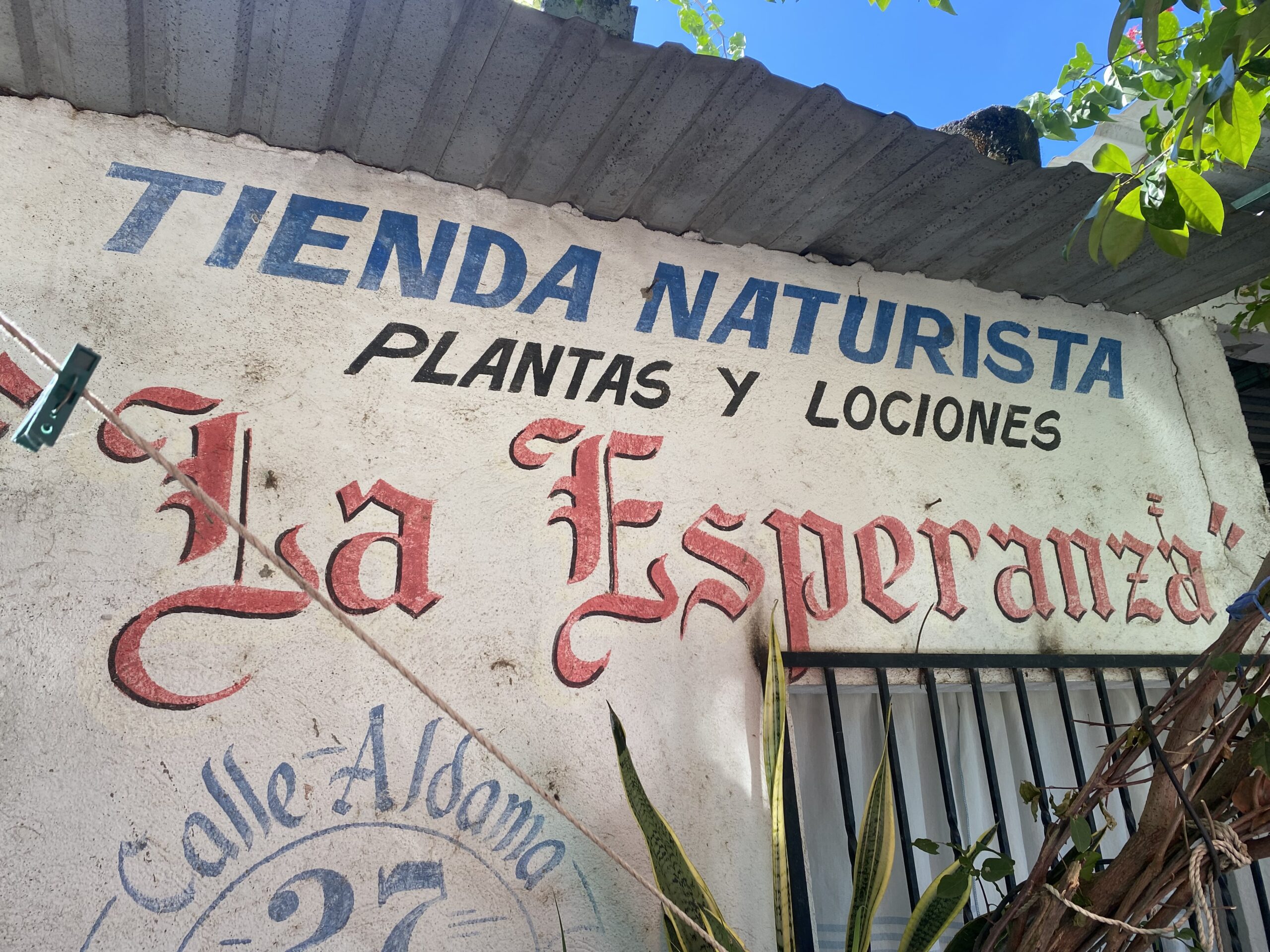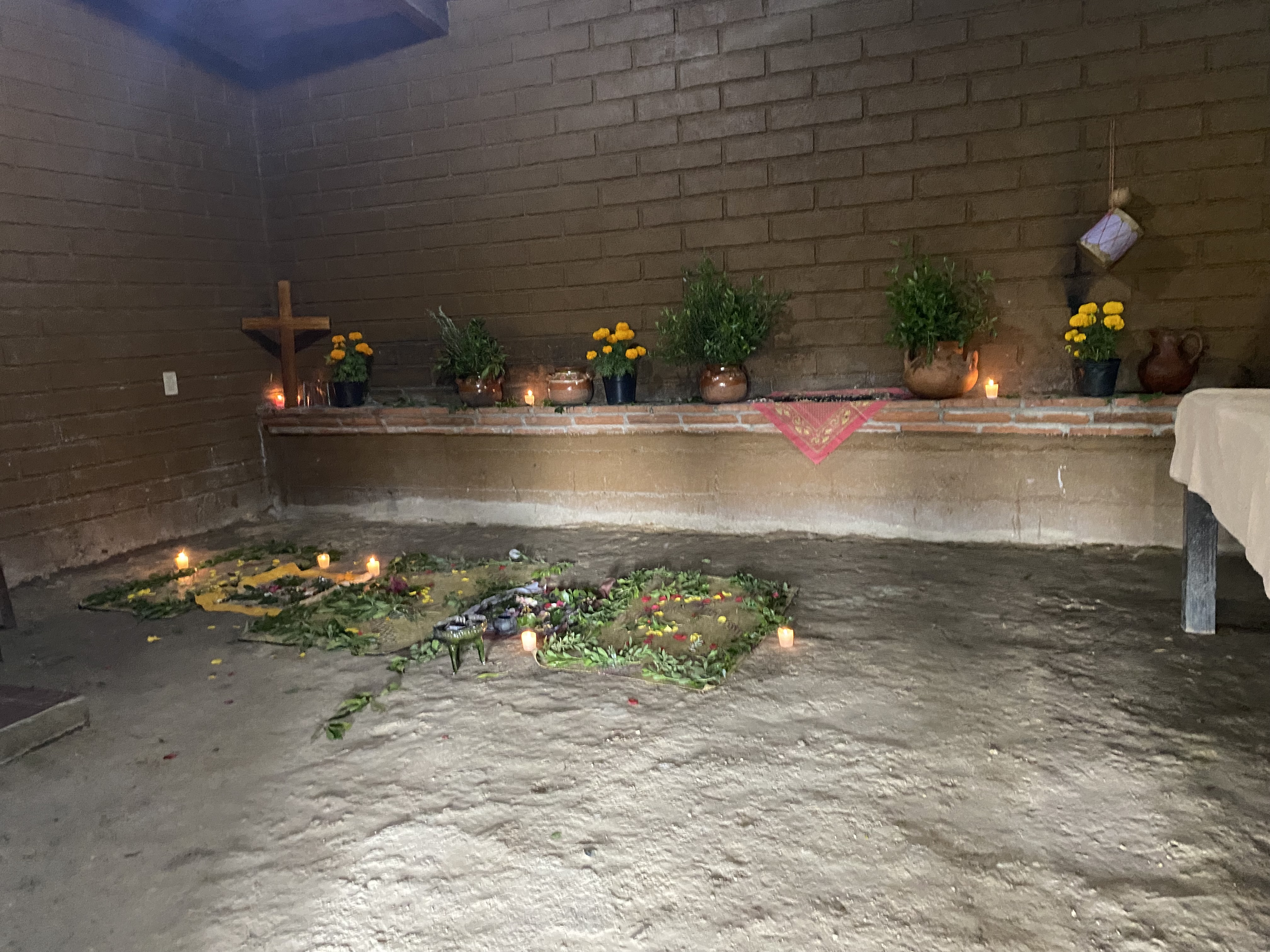
Yerba Santa, Pa’ La Garganta
Oct. 20, 2023
During the first weeks of the program, during the evenings, my cohort participated in Spanish classes to improve our vocabulary and learn more about the terminology used in the clinical setting, to help us during our clinical rotations. On one of the last days of class we listened to the song “El Yerbero Moderno” sung by Oaxacan singer Lila Downs and La Sonora Santanera. The song talks about a yerbero, or herbalist, coming to town and bringing all kinds of herbs and plants to treat various ailments – “yerba santa, pa’ la garganta” / “holy herb, for a sore throat”. At the end of the lesson, the teacher explained that for the next several weeks, our Spanish class would be replaced by herbalism workshops led by a yerbera. I was very excited to hear that we would get to learn more about this aspect of Oaxacan culture, and explore the medicinal properties of the different plants and herbs that are native to the region.
We have now completed several workshops with the yerbera where I have learned how to make vaporub (yes, like the Vick’s ointment!) naturally from plants and herbs. We’ve also made various tinctures and balms using alcohol and plants like basil, rue, rosemary, eucalyptus, and thyme, to name a few. Today, many indigenous and rural communities in Oaxaca continue to rely on local plants and herbs to make medicines because clinics and pharmacies are not readily accessible and it is often more convenient to use home remedies or use traditional healing methods when one is sick. The yerbera said that she learned about herbalism from her mother, who learned from her mother. It’s a practice that has been passed down for generations and something that all her siblings were taught so that they could continue providing these services to their community in the Sierra Mountains where a modern health system was not well established.
I also learned in my lectures that the state of Oaxaca has been trying to integrate traditional healing practices into its existing health system so that healthcare services are more accessible to and welcoming of rural and indigenous groups. During a clinical rotation at a Centro de Salud, I had a conversation with a doctor who explained to me that although the medical training in Mexico is largely based on Western medical practices, in Oaxaca it’s very important to practice cultural humility by respecting and honoring the traditional healing methods that many communities continue to use today. The doctor said that although she personally does not make recommendations on herbalism or spiritual cleansings because they’re unfamiliar to her, she will listen to her patients that do practice these forms of healing and advise them appropriately, whether it means educating a patient on how a particular home remedy could be harmful to them or giving them the thumbs up to continue their practices if it’s safe to do so.
In my own family, my mom has some knowledge of herbalism and whenever I was sick would prepare different teas or rinses to help with certain symptoms. It’s been eye-opening to learn about how these practices can be incorporated into a modern medical practice and I think the most important lesson has been to not only immerse myself in traditional healing practices like the limpia, but also consider the history behind these practices and reflect on the factors influencing their persistence over time. There are many barriers to healthcare services for indigenous and rural communities not only in Oaxaca, but across Mexico and in the U.S. too. I think it’s important to acknowledge the diversity of healing practices used in different cultures and also learn about them to promote cultural humility in the healthcare setting.

